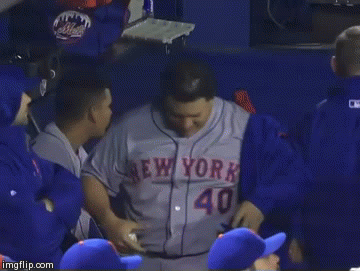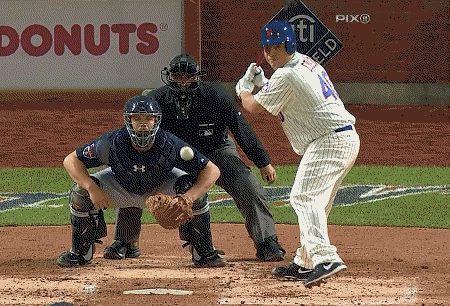This article was originally published at Batting Leadoff on July 25, 2014.
Bartolo Colon is the Rodney Dangerfield of baseball: he don’t get no respect. Despite an impressive late-career resurgence, baseball fans know Colon best for his, uh, generous proportions. The 285-pound pitcher is a frequent target of mockery on Twitter and Deadspin; his celebratory post-game belly shake is undoubtedly the baseball GIF of the year, though Colon whiffing and losing his helmet while at bat is also a strong contender.


Colon has gotten the last laugh, though: after undergoing experimental stem-cell therapy in 2010, he’s reinvented himself as a durable, innings-eating workhorse. He has posted a sub-4.00 FIP every subsequent season, providing value as a starting pitcher for the Yankees, Athletics, and now the Mets. Even after a 50-game suspension for testosterone use in 2012, he had his best-ever season (in terms of ERA and FIP) in 2013. The Mets signed Colon to a two-year, $20 million contract last offseason, and have been rewarded with a solid year so far. His FIP is 3.50, and yesterday, he had a perfect game going through 6 2/3 innings. Had he achieved the perfecto, I think the Internet might have broken.
Every game Bartolo Colon throws is a perfect game
— Sam Miller (@SamMillerBP) July 23, 2014
So what’s the secret to his success?
First, Colon issues very few walks. His BB/9, already stingy at 1.56 from 2011-14, has fallen to 1.28 this season, good for fifth-best among qualified starters. This, combined with a respectable 6.72 K/9 this season, has resulted in a 5.26 K/BB ratio. At tenth-best this season among qualified starters, this ratio puts him in the same territory as strikeout machines like Stephen Strasburg and King Felix.Second, Colon’s fastball, while not particularly fast (89 mph), is accurate and has movement. He’s well known for heavy reliance on his fastball, throwing it 82% of the time this season, more than anyone else. But according to his catchers, he throws at least five different kinds of fastball, including a two-seamer and a cutter. His pitches, especially his two-seamer, have high lateral motion; it breaks even more than his changeup does. But he still keeps half of his pitches in the strike zone, sixth-best in baseball.

Third, he pitches deep into games and misses few starts. His size and age would make him seem like a likely candidate for a long DL stint, yet he’s thrown 639 innings over 100 starts during the past four seasons, putting him in the top 50 during that time period. His average of 6 2/3 innings per game is fourth-best in the National League among pitchers with at least 10 starts. Colon’s ability to throw strikes, avoid breaking balls, and get hitters out using control and deception rather than blistering speed may give him durability. Together, these three factors combine to create consistently solid performance. He’s not Clayton Kershaw, but he gives you 175-200 innings of average to above-average ball per season, depending on your definition of FIP. Not many 41-year-olds can do that.
With the Mets likely out of the playoff hunt, the front office is shopping him to the Orioles, Mariners, Giants, and others, with the hopes of garnering a shortstop or power-hitting outfield prospect in return. The Mets have a deep, young starting rotation, and Colon is unlikely to make a big contribution when the team (hopefully) contends in 2015 and beyond. So far, teams in the pennant chase have not exactly hurried to acquire Colon. Before Wednesday’s start, he had had a rough July, with an ERA of 5.40 and zero wins. But his slump mostly reflected bad defense rather than deteriorating ability. His FIP during the same timeframe was 3.29 (making July his best month this season), and his velocity, which declined down the stretch in 2013, has not fallen this year.

If, in Jim Bowden’s estimation, Bartolo Colon was worth a “good, upper-level prospect” in June, then the same should be true now also. As a fan of humorous baseball GIFs, I hope he stays in the National League where he can continue to bat.